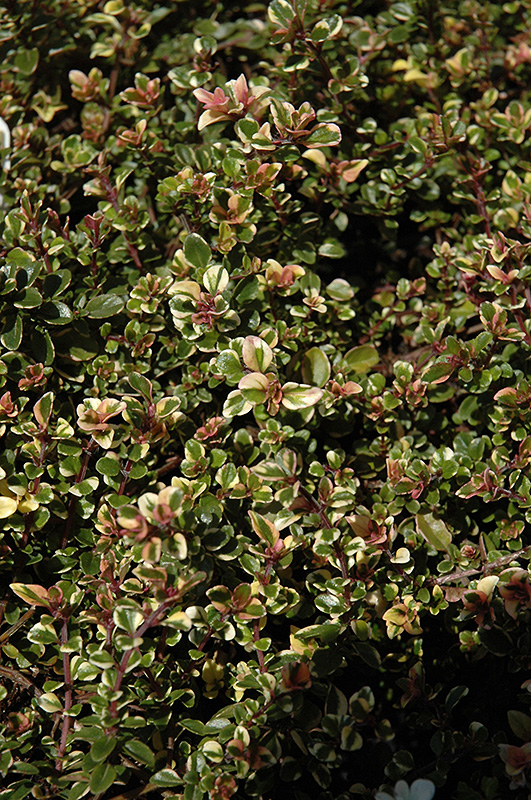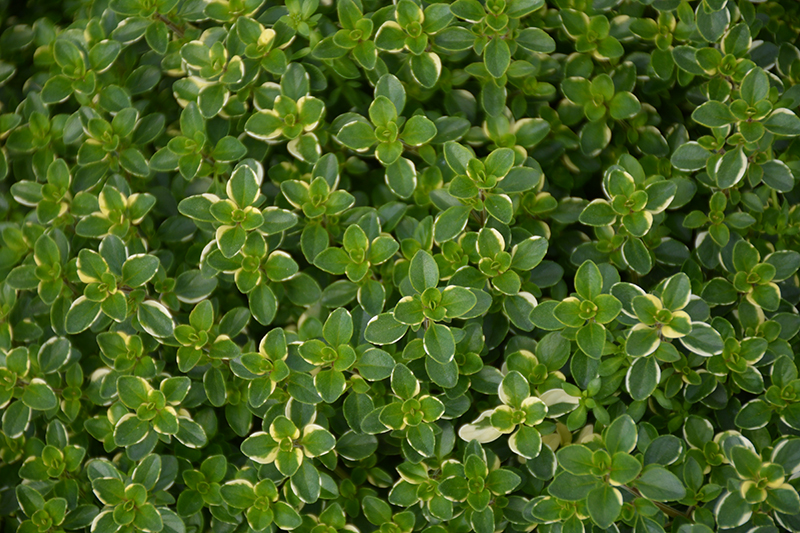6 inches
12 inches
15 inches

4a
Lemon Thyme, Greater Wild Thyme
Variegated Broadleaf Thyme is a perennial herb that is typically grown for its edible qualities, although it does have ornamental merits as well. The fragrant round green leaves with showy creamy white variegation can be harvested at any time in the season. The leaves have a savory taste and a pleasant fragrance.
The leaves are most often used in the following ways:
Variegated Broadleaf Thyme is smothered in stunning spikes of lilac purple flowers with white overtones rising above the foliage from early to mid summer, which emerge from distinctive burgundy flower buds. Its attractive fragrant round leaves remain green in color with showy creamy white variegation throughout the year.
This is a dense herbaceous evergreen perennial herb with a spreading, ground-hugging habit of growth. It brings an extremely fine and delicate texture to the garden composition and should be used to full effect. This plant will require occasional maintenance and upkeep, and is best cleaned up in early spring before it resumes active growth for the season. Deer don't particularly care for this plant and will usually leave it alone in favor of tastier treats. Gardeners should be aware of the following characteristic(s) that may warrant special consideration;
Aside from its primary use as an edible, Variegated Broadleaf Thyme is sutiable for the following landscape applications;
- Rock/Alpine Gardens
- Border Edging
- General Garden Use
- Groundcover
- Herb Gardens
Variegated Broadleaf Thyme will grow to be only 6 inches tall at maturity extending to 12 inches tall with the flowers, with a spread of 18 inches. When grown in masses or used as a bedding plant, individual plants should be spaced approximately 15 inches apart. Its foliage tends to remain low and dense right to the ground. It grows at a fast rate, and under ideal conditions can be expected to live for approximately 10 years. As an evegreen perennial, this plant will typically keep its form and foliage year-round.
This plant is quite ornamental as well as edible, and is as much at home in a landscape or flower garden as it is in a designated herb garden. It should only be grown in full sunlight. It prefers to grow in average to dry locations, and dislikes excessive moisture. It is considered to be drought-tolerant, and thus makes an ideal choice for a low-water garden or xeriscape application. It is not particular as to soil type or pH. It is highly tolerant of urban pollution and will even thrive in inner city environments. Consider covering it with a thick layer of mulch in winter to protect it in exposed locations or colder microclimates. This is a selected variety of a species not originally from North America. It can be propagated by division; however, as a cultivated variety, be aware that it may be subject to certain restrictions or prohibitions on propagation.

